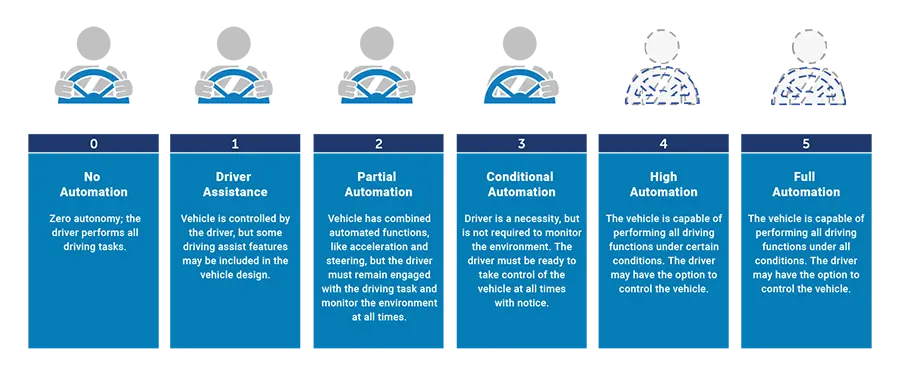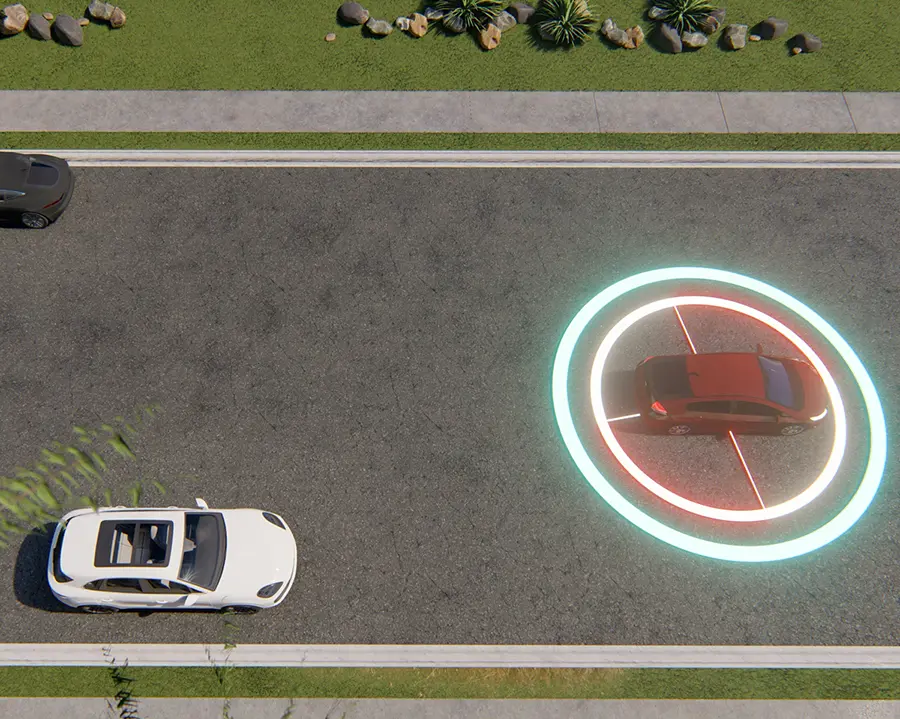where is my self-driving car?
Sydney's seminar
Despite their name, self-driving cars are, in fact, not self-driving.
This misnomer aside, modern-day transportation companies are researching and developing autonomous vehicles every day. With steady advancements in technology and a growing trend towards a computer-aided lifestyle in first-world countries, there has been a great deal of conversation around getting this technology up and running. It’s no surprise then that estimates in 2016 declared that cars would be fully autonomous by 2021, but the technology is still years away from being complete and then approved for driving in the United States.
Currently, ambitious CEOs predict that cars will be self-driving within the next 3-5 years.
SO WHAT ARE SELF-DRIVING CARS?
To be more accurate, we will be calling self-driving cars automated vehicles. These vehicles sit on a scale of 0-5 to show the level of automation. Currently, the most advanced cars have achieved a rating of 2 on the scale, meaning that the vehicle can control both steering and braking/acceleration under some circumstances. Even in these cases, the driver must pay full attention to the road and keep their hands on the wheel.

The goal is full automation, which is a rating of 5 on the scale. In the case of full automation, the driver may be involved in the driving process but is not required to be involved. The tricky part of reaching this end of the scale is creating intelligent technology capable of keeping the occupants safe. (For more information on intelligent technologies, see my previous article What Is AI?)

SAFETY CONCERNS
The primary reason for creating self-driving cars isn’t just for lazy people who don’t want to drive. By creating a network of AI-driven cars, the hope is to completely remove the human error that causes 35,000 deaths/year in motor-vehicle crashes. Robots don’t get road rage, they don’t get tired, and most importantly, they can’t just NOT follow the rules. Additionally, machines don’t get distracted and stop paying attention to the road to look at their phones or check a map like people.
The idea in the industry is to get the technology to the point that it is saving lives, which has unfortunately been difficult. A news story will pop up every couple of months about autonomous vehicles malfunctioning and creating sometimes fatal accidents. More specifically, at this point, autonomous vehicles are twice as likely to be involved in crashes than conventional cars.
HOW WILL WE GET THERE?
With all the difficulties of teaching a machine to react to situations based on input from many random factors, mapping all roadways correctly is proving to be an additional challenge. While GPS and satellite mapping have been developing since 1978, not all roadways have been accurately mapped, which would make it difficult for autonomous vehicles to navigate. Additionally, at this point, all roadways would need to be well maintained to be navigable.
Beyond these challenges, there will also be the hurdle of creating and adapting state laws to better suit self-driving cars. It will be the responsibility of the developers of these vehicles to prove that their machines are safer for people than a regular car. For example, if a self-driving car gets into an accident, who is at fault?
Addressing these concerns is just as important as developing the AI software.
HERE’S TO THE FUTURE
Although science needs to make significant leaps and bounds to make true, fully autonomous vehicles reliable and everyday stable, the potential benefits make it a fascinating process to watch. Ideally, one-day roads will be much safer and less congested with the help of technology—though it’s likely to take a few decades to go mainstream.

If you’re interested in learning more, there is a lot more information available about Autonomous Vehicle Statistics, the Evolution of Automated Safety Technologies, and the Major Pros and Cons of Self-Driving Cars.
We here at CLARK strive to stay current on technology. If you have questions, need IT Support, or are looking for IT services including cabling, cybersecurity, and websites, just give us a call at 301-456-6931 or email support@clarkcomputerservices.com.

Being raised by Clark’s owner, Darren, I have always been immersed in the world of technology. However, I have always followed it from a distance. I went to college to get my degree in Business Finance and Applied Economics, as I have always been a fan of research and statistics. I was even lucky enough to get my senior thesis in economics published. My next string of luck was getting a job straight out of college as a Researcher in Richmond, VA. I was able to pursue research and publish dozens of news articles in my field. Now, I am so excited to delve back into the world of technology that I was raised in, and look forward to honing my research in the technological field.
